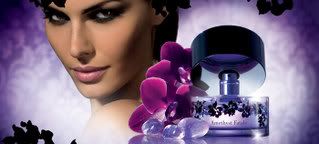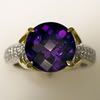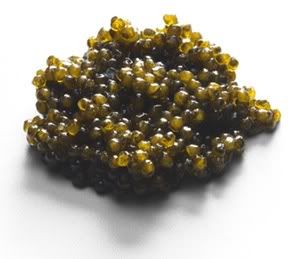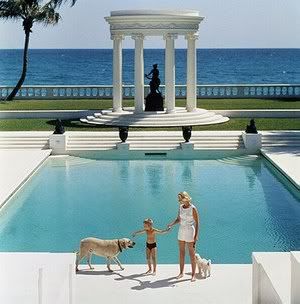
Has it ever happened to you to completely dismiss something new merely on the value of past experiences and then be proved wrong? Surely it has! This is what happened to me with the newest perfume by Swedish skincare and cosmetics brand Oriflame, concerning their newest release Amethyst Fatale. Although I have sampled many of their products, I had always assumed that their fragrances are second in hierarchy after their skincare which forms the lion's share of their revenue anyway. Experiences with their fleeting specimens also contributed to a nonchalant view towards sampling more of them. Because although many were decent enough, their lasting power left something to be desired, which hinted at a cost-effective management decision.
Not so with their latest however. The first in the so-called Gem Collection, a line of scents that aims to be inspired by gemstones (obviously a big trend now if one judges by the similar offerings by Bulgari, Olivier Dubrano and Lalique) and focus on the perfumers themselves instead of the celebritoid du jour, managed to convince me that it might be worth a shot sporting it from time to time, especially as it has been created by Jean Jacques (responsible for Balmya, most of the Matsushima Masaki scents and L'or de Torrente) with the collaboration of one of my favourite noses, Francis Kurkdjian. And lo and behold, compliments ensued. Not a bad start!
According to Cosmeticsdesign-europe.com:
Sweden-based firm's new perfume is not marketed on the pull of fast moving celebrities, but on the role the perfumer behind the scent.
"A key trend in the fragrance market is the rise of signature fragrances and Gem Collection is tapping into that trend," said a spokesperson for Oriflame .
In the case of Amethyst Fatale, the signatory is the creator of the perfume, the well known "nose" Jean Jacques.
Oriflame's decision to use Jean Jacques' signature to market the new fragrance represents a new take on the endorsement idea.
"Consumers are becoming more aware of the complexity of perfumery and so educated consumers are likely to be drawn to fragrances that are endorsed by experts rather than celebrities," said Briony Davies from Euromonitor.
Perfumer Jean Jacques attempted to translate the Amethyst gemstone into a scent whilst being guided by the image of the femme fatale whose arresting beauty and gaze makes you dive into "an unexpected world of passion and danger". To complete this task, Jean Jacques used the iris.
"I could imagine in the elegant odour of the iris: powdery, soft and caressing, all of which echo the amethyst," said Jacques.

Its mythological root lies in the tale of Dionysus, god of wine and celebration, who was insulted by a mortal who didn't acknowledge him. Enraged, he spotted a young maiden named Amethyst. The unsuspecting girl, on her way to pay tribute to the goddess Diana, was detained and two tigers were summoned by the god to devour the youth. Amethyst cried out to Diana in despair and the goddess quickly transformed the young mortal into a glimmering white stone (known as “quartz”) to protect her. When he realized his wrongdoing Dionysus wept tears of wine onto the stone staining it purple, creating the gem we know today as amethyst.
Lovely tale, isn't it?
Iris and the colour purple are very au courant these days as well and with the charmingly pleasant experience of Prada Infusion d'Iris and the less exciting Iris Ganache by Guerlain in my short-term memory banks, I set out to explore another iris-based scent. This time it involved the smooth ambience of the modern chypre, a concept on which I talked in detail before.
Amethyst Fatale promises "pure fragrance intoxication. Combining warm amber notes with powdery iris and lush rose, this unpredictable scent refuses to be forgotten" according to Oriflame.
As I open the little glass vials of Eau de Parfum available for sampling, the impression of a chiaroscuro patchouli composition is greeting me with a wink. The feeling is far removed from the headshop and into the protection of clothes from moths, as was one of its primal uses. You can almost feel the tactile sensation of soft wools caressing your cheek as you open up an armoire with plush knits. Its crushed powder is gently folded in rosy liquid that recalls damp earth as if rained upon with the echo of distant thunder. The marriage of rose to patchouli is cemented in tradition but with the flair of a first-throes passion, as those two amorous lovers adore bringing each other's best points out: patchouli making the rosy petals unfurl indefinetely, mellowing them and anchoring the feminine smell; rose caressing the green leaves and rendering them softly powdery.
Francis Kurkdjian is of course famous for his modern rendition of roses -and abstract floral notes in general- such as in Guerlain'sRose Barbare, Ferre Rose, Narciso For Her or the re-issued Rumeur by Lanvin. And here I can see the mentor's influence.
The iris part might be contributing to the earthy feel I get as well, although to my nose this is not a predominantly iris scent, but rather a palimpsest. There is an element of powdery tonality that reminds one of white musks as used in popular renditions lately, as well as the slightly woody and vanillish whiff of benzoin. The impression is never too sweet and in that regard it is infinitely superior to most things currently put on a pedestral on perfume-store shelves and certainly to Armani Code whose bottle it might be argued that it vaguely reflects.
As it exits the scene in lento moves it does so with the gentle refinement of a lady who is assured of her attractiveness enough not to assume poses and goes for the subtle approach of white silk underwear instead of racy red lace.
Oriflame is available in European countries and overseas in the Americas and Asia, but not in the United States.
So, for our readers in the US I have a couple of samples I would be glad to offer if they enter a comment that they would like to receive one. Hurry while the offer lasts!

Ad pic from Oriflame, ring pic courtesy of askDaveWest
.jpg)










